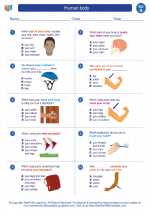Ceramic
Ceramics are non-metallic, inorganic materials typically made from clay and other minerals. They are known for their strength, hardness, and ability to withstand high temperatures, making them useful for a wide range of applications.
Types of Ceramics
There are several types of ceramics, including:
- Traditional Ceramics: These include clay products such as pottery, bricks, and tiles.
- Refractory Ceramics: These are designed to withstand high temperatures and are used in kiln linings, furnaces, and other heat-related applications.
- Advanced Ceramics: These ceramics are engineered for specific properties, such as electrical conductivity, thermal insulation, or chemical resistance. Examples include alumina, silicon carbide, and zirconia.
- Bioceramics: These ceramics are used in biomedical applications, such as dental implants and artificial joints.
Properties of Ceramics
Ceramics exhibit several key properties:
- Hardness: Ceramics are very hard and resistant to scratching or abrasion.
- Brittleness: While ceramics are hard, they are also brittle and can fracture under high stress.
- High Temperature Resistance: Many ceramics can withstand extreme temperatures without deforming or melting.
- Chemical Inertness: Ceramics are often resistant to chemical corrosion, making them useful in harsh environments.
- Electrical Insulation: Some ceramics are excellent insulators and are used in electrical components and devices.
Uses of Ceramics
Ceramics are used in a wide range of applications, including:
- Building materials such as bricks, tiles, and structural components
- Kitchenware and pottery
- Electrical insulators and components
- Refractory linings for kilns and furnaces
- Biomedical implants and devices
- Advanced engineering components in aerospace and automotive industries
Study Guide
When studying ceramics, it's important to understand the different types, properties, and uses of ceramics. Pay attention to the unique properties of ceramics and how they differ from other materials such as metals and polymers. Additionally, understanding the manufacturing processes for ceramics, such as firing and sintering, can provide insight into their properties and applications.
Key topics to focus on include:
- Types of ceramics and their characteristics
- Properties of ceramics and how they influence their use
- Applications of ceramics in various industries
- Comparison of ceramics with other materials
Be sure to review examples of ceramics in everyday life and in high-tech applications to appreciate the versatility and importance of these materials.
Good luck with your studies!
.◂Science Worksheets and Study Guides First Grade. Human body

 Activity Lesson
Activity Lesson
 Worksheet/Answer key
Worksheet/Answer key
 Worksheet/Answer key
Worksheet/Answer key
 Worksheet/Answer key
Worksheet/Answer key
 Worksheet/Answer key
Worksheet/Answer key
 Worksheet/Answer key
Worksheet/Answer key
 Worksheet/Answer key
Worksheet/Answer key
 Vocabulary/Answer key
Vocabulary/Answer key
 Vocabulary/Answer key
Vocabulary/Answer key
